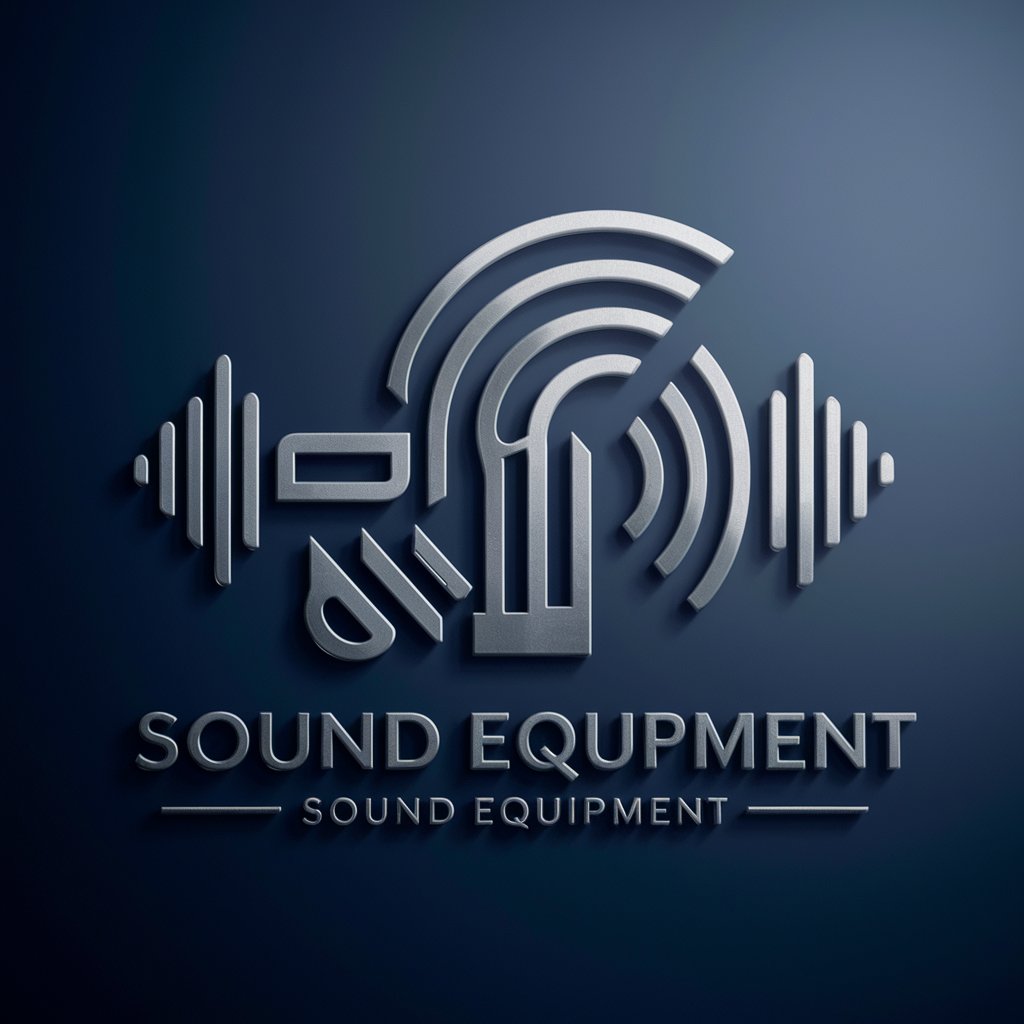Sound Equipment - Sound Equipment Guidance

Welcome! Let's dive into the world of audio technology and music.
Empowering Your Audio, AI-Driven
Can you explain the difference between a passive and active speaker?
What's the best type of amplifier for a home audio setup?
How do I properly position my speakers for optimal sound quality?
What are the key specifications to look for when buying studio monitors?
Get Embed Code
Understanding Sound Equipment
Sound Equipment, as a domain, encompasses a wide array of devices designed to record, amplify, process, and reproduce sound. This includes speakers, microphones, amplifiers, mixing consoles, and digital audio workstations, among others. The primary purpose of sound equipment is to enhance the quality and control over audio output for various applications, from live performances and recording sessions to home entertainment and public address systems. For example, in a live concert scenario, microphones capture the sound, which is then processed and mixed through a console, amplified, and finally delivered to the audience through speakers. Similarly, in a studio setting, sound equipment is used to record, mix, and master music tracks with high fidelity, allowing for creative control over the final sound. Powered by ChatGPT-4o。

Core Functions of Sound Equipment
Amplification
Example
Guitar amplifiers
Scenario
Enhancing the sound output of electric guitars during live performances or recording sessions, providing not only increased volume but also tonal adjustments.
Sound Processing
Example
Effect pedals and digital audio processors
Scenario
Altering audio signals to achieve desired sound characteristics, such as reverb, delay, or distortion, used extensively in music production and live performances.
Recording
Example
Digital Audio Workstations (DAWs)
Scenario
Capturing and editing sound, allowing for multitrack recording, mixing, and mastering in a studio environment, essential for music production.
Sound Reproduction
Example
Loudspeakers and headphones
Scenario
Delivering audio content to listeners, ranging from home entertainment systems to professional studio monitoring setups, ensuring high-fidelity playback.
Signal Routing and Distribution
Example
Mixing consoles and audio interfaces
Scenario
Managing multiple audio sources, directing signals to different outputs or devices, and balancing levels for live sound reinforcement or studio recording.
Target Users of Sound Equipment
Audio Professionals
This group includes sound engineers, music producers, and live sound technicians who require high-quality, reliable sound equipment for recording, mixing, mastering, and live sound reinforcement. Their work demands precision and control over audio output, making advanced features and durability a priority.
Musicians and Performers
Artists who perform live or record music benefit from sound equipment to amplify their instruments, process their sound in real-time, and record their performances. The ability to manipulate their audio output allows for artistic expression and audience engagement.
Audio Enthusiasts and Hobbyists
Individuals passionate about high-fidelity sound, whether for home listening, amateur recording, or small-scale live events. They value sound quality and may seek equipment that offers a balance between professional features and affordability.
Educational Institutions and Training Centers
Schools, universities, and specialized training programs that offer courses in music production, sound engineering, and related fields. These users need a variety of equipment to provide practical experience and technical training to students.

How to Use Sound Equipment
1
Begin by exploring sound equipment options at yeschat.ai, where you can access a free trial without the need for a login or subscribing to ChatGPT Plus.
2
Identify your audio needs by considering the event or environment you are setting up for, such as live music, podcasting, or home cinema.
3
Select appropriate equipment based on your requirements, focusing on the type of speakers, amplifiers, and any additional audio processing tools needed.
4
Set up your equipment by carefully following the manufacturer's instructions, ensuring all components are correctly connected for optimal sound quality.
5
Conduct sound checks and adjustments to balance audio levels, EQ settings, and spatial positioning of speakers for the best listening experience.
Try other advanced and practical GPTs
Gabi's Bazaar
Unleash Your Creativity with AI

Fashion Trends
AI-powered Personal Fashion Assistant

Tips for Entrepreneurial Glory
Empowering Entrepreneurial Success with AI

Gen Z Humor Police
Elevate humor with AI-powered Gen Z insights

Wohnungswert ermitteln online
AI-powered Real Estate Valuation

Wie sicher kann ein GPT sein? 🔒
Elevate your AI interactions with enhanced security.

Social Butterfly
Empowering Social Media Mastery with AI

Otoura Travel Guide
Travel advice with a smirk.

Vacation Expert
Navigating Vacation Ownership with AI

Audacity Audio Assistant
Empower your audio editing with AI

Audio Books
Explore. Listen. Learn. Anywhere.

Beach House
Discover Your Dream Beach House with AI

Frequently Asked Questions About Sound Equipment
What's the best way to choose speakers for my home theater?
Consider room size, desired sound quality, and budget. Look for speakers with a wide frequency range and good reviews for clarity and depth of sound.
Can I connect multiple microphones to a single amplifier?
Yes, but you'll need a mixer to manage the inputs and balance the sound levels. This prevents distortion and allows for audio adjustments.
How do I prevent feedback noise in my audio setup?
Position microphones away from speakers, use directional microphones, and adjust EQ settings to reduce frequencies that are prone to feedback.
What's the importance of an audio interface in a recording setup?
An audio interface converts analog signals to digital, allowing for high-quality recording on a computer. It's essential for professional-sounding recordings.
How can I improve the sound quality of my podcast?
Use a high-quality microphone, record in a quiet, acoustically treated space, and employ post-production techniques like noise reduction and equalization for clarity.
